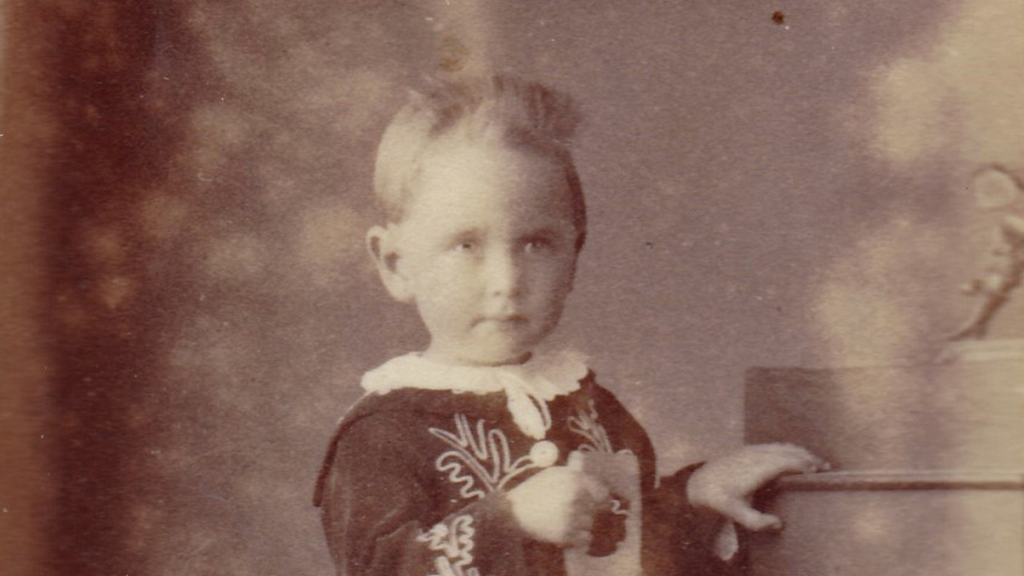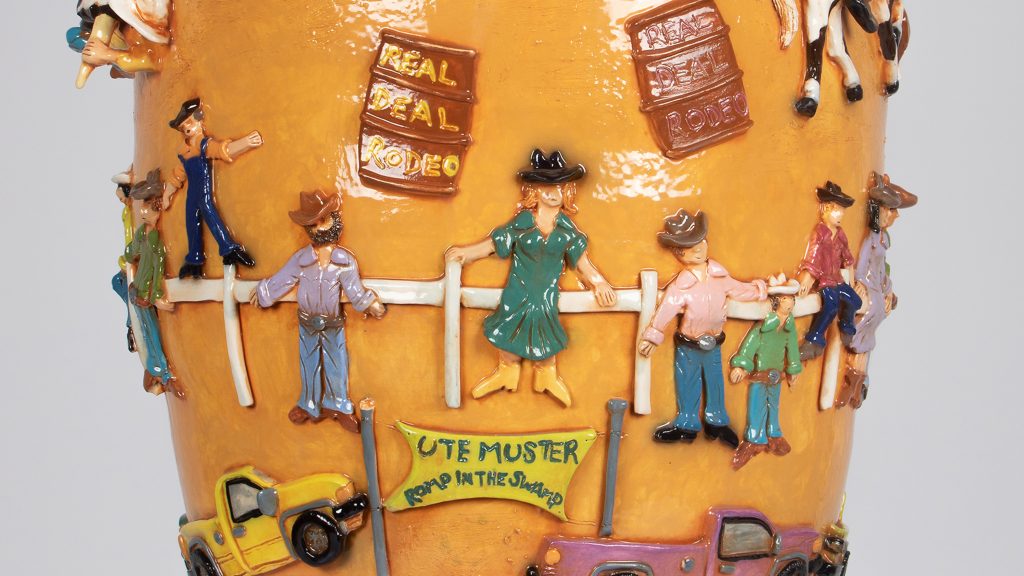
After making a series of artworks in 2010 which captured the performance of a circus girl, Anna Culliton (1966-) was on the hunt for a new subject. It was during a visit to the Taralga Rodeo that inspiration struck the potter. A nineteen-year-old quarter-horse rider was about to perform when his name was announced: Clay […]
Read More…
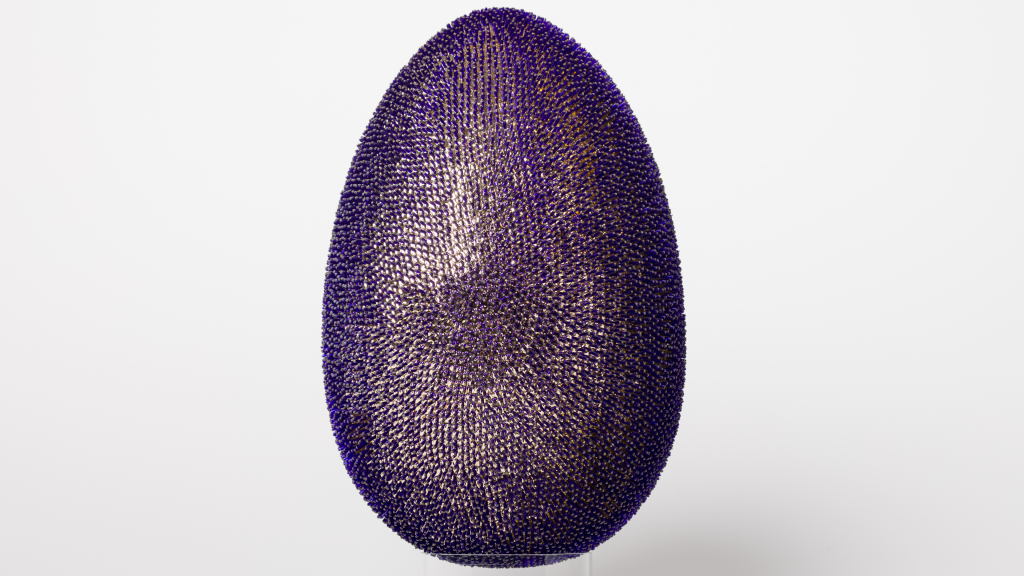
An egg is indeed a treasure, especially when it shimmers with a thousand points of light as it does in Nell’s (1975-) mixed media work, Treasure (2003). Nell, an artist known only by her first name, works across a range of mediums encompassing painting, installation, ceramics and performance. Treasure is an object that embodies her […]
Read More…
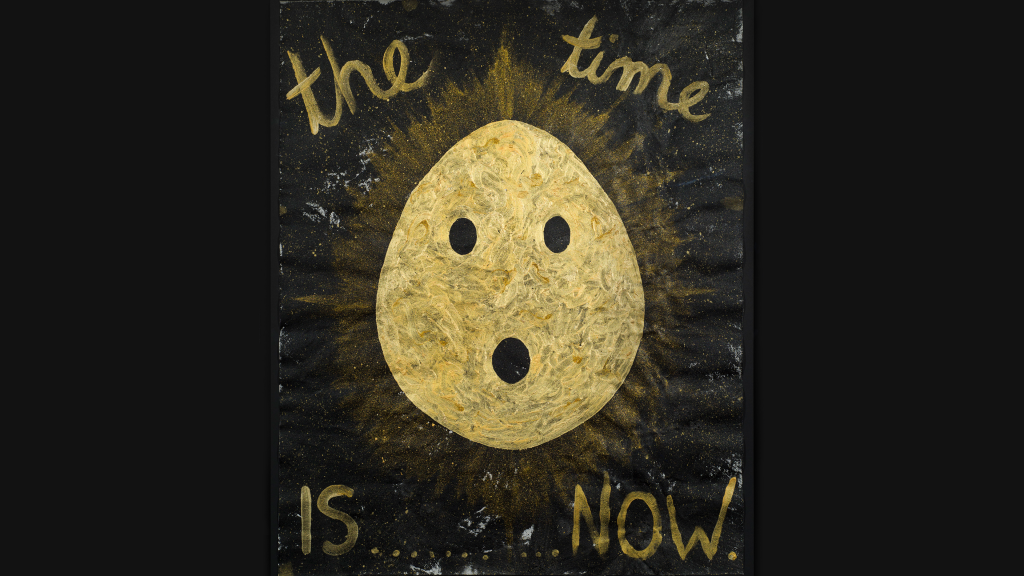
The time is now, declares Nell’s painting. Time to awaken to the present moment, time to awaken to enlightenment. Nell (1975-), an artist who is known only by her first name, invokes the spiritual traditions of Buddhism in her multi-disciplinary works. She works across immersive installations, paintings, ceramics, mosaics, neon light works and music videos […]
Read More…
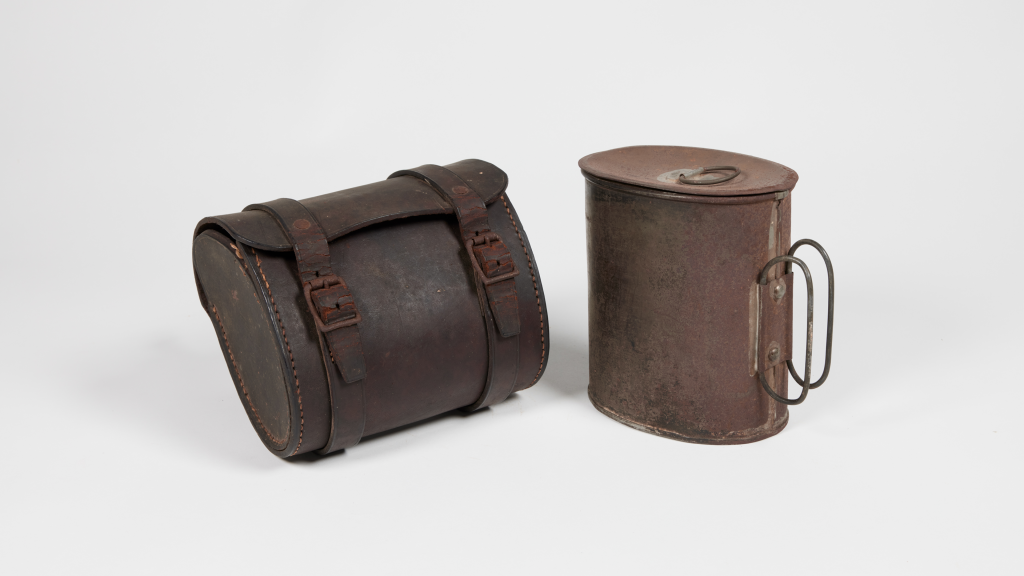
The stockman’s quart pot – a billycan (kettle) with a cup that fits inside it – was a popular kit carried by bush men and women to brew and drink tea. Whether journeying on horseback or by foot, travelling in the dry Australian ‘bush’ was a very thirsty business. A cup of leaf-tea, brewed on […]
Read More…
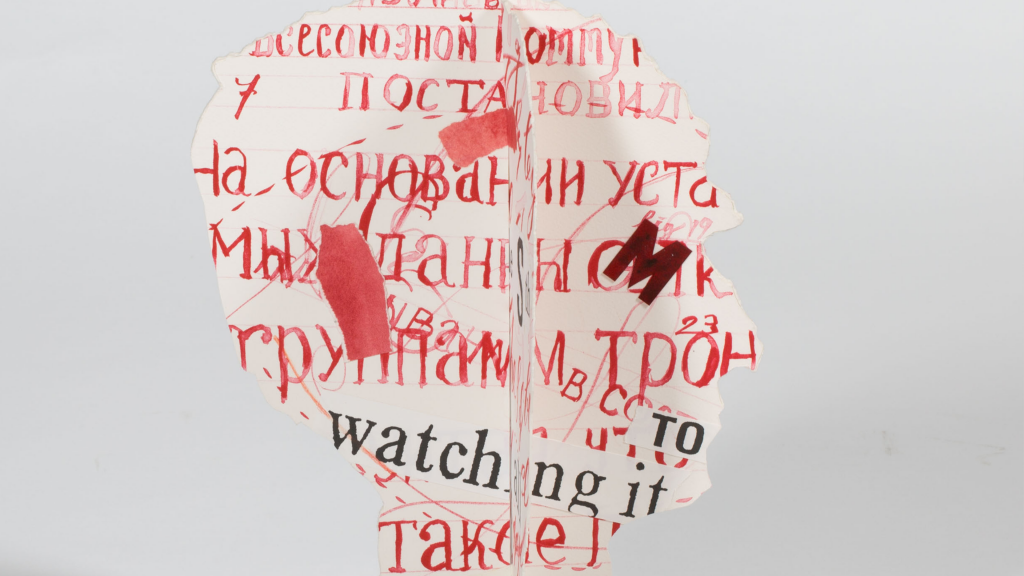
Head III (2007) is a profile, a sculpture and a drawing at once. It’s a work by William Kentridge (1955-), a South African artist who is interested in transformations between materials, and differences in perspectives. Kentridge works across many mediums, ranging from drawing, printmaking and animation to theatre set and costume design. He was born […]
Read More…
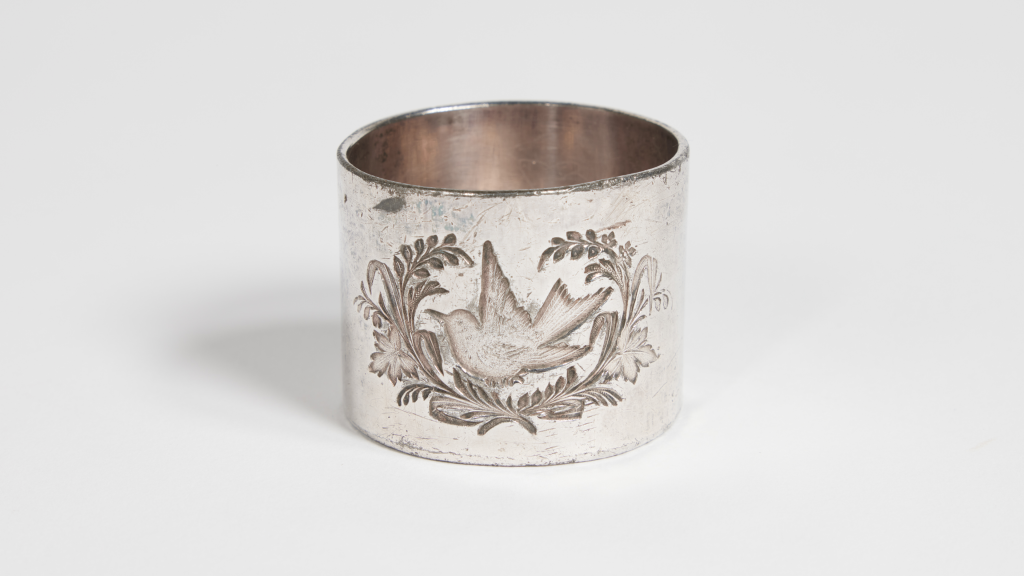
These napkin rings belonged to the Wilson family of Berry. James C Wilson (1834-1901) emigrated to Australia in 1857 and found work on the Berry Estate, before co-founding Wilson and Co. Store, establishing other business interests that included coal mining, and becoming Berry’s first Mayor. Around 1880, with wife Robina nee Tait (1849-1918), the Wilsons […]
Read More…
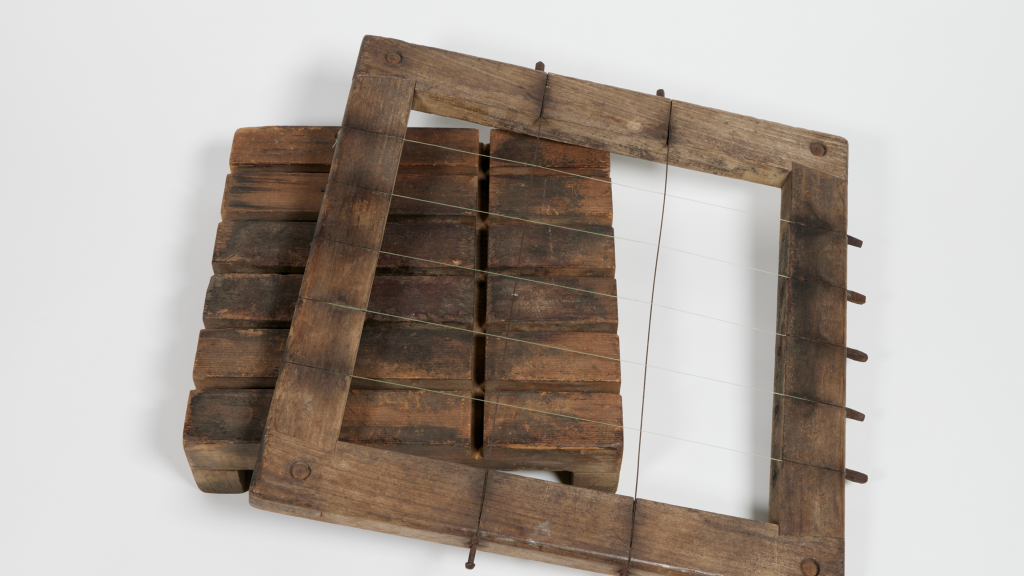
The first butter factory in Australia was established at Kiama, on the NSW South Coast, in the early 1880s. Until then the trade of dairy products occurred directly between the farmer and buyer. Butter was made in small quantities using centuries-old techniques to separate the cream from cow’s milk and churn it into butter. It […]
Read More…
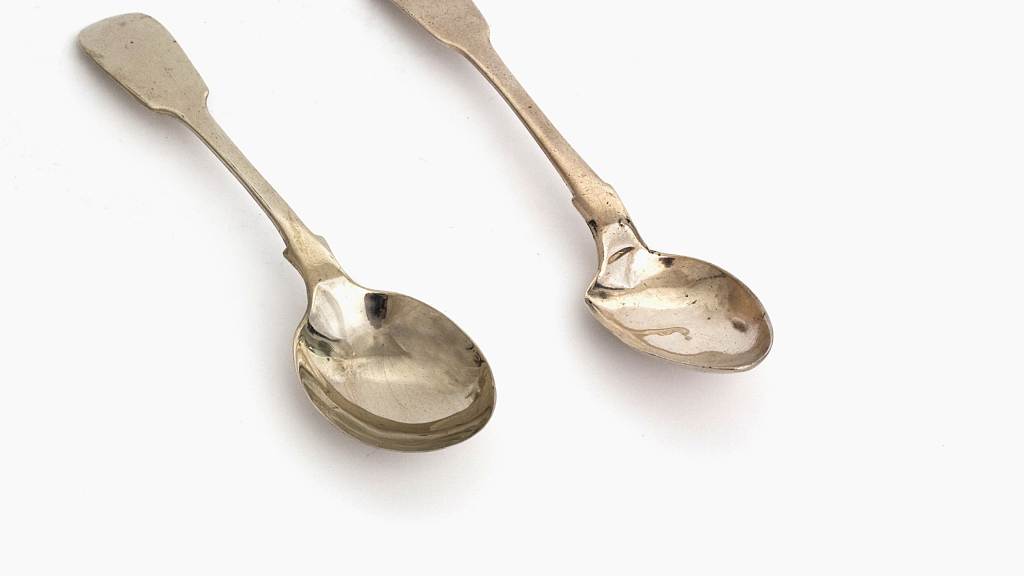
Silver spoons were very nearly Alexander Dick’s (c.1791-1843) undoing. A free settler who arrived in 1824, he was a working silversmith with a prospering business in Sydney in 1826 when he made a deal that cost him dearly. Anxious to produce an order of silverware for a client, he knowingly bought a set of ‘old’ […]
Read More…









